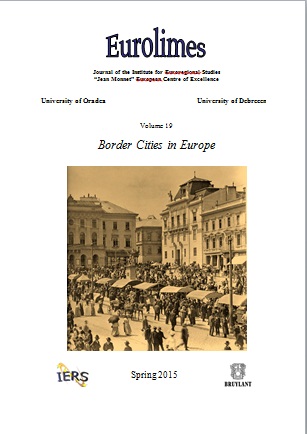The Borderland City of Turkey: Izmir from Past to the Present
The Borderland City of Turkey: Izmir from Past to the Present
Author(s): Sedef EYLEMER, Dilek MEMIŞOĞLUSubject(s): Human Geography, Local History / Microhistory, Cultural Anthropology / Ethnology
Published by: Editura Universitatii din Oradea
Keywords: Izmir, Smyrna, Turkey, borderland city, international port, historical and cultural heritage
Summary/Abstract: Izmir is a large metropolis in Turkey at the side of a gulf on the Aegean Sea in the westernmost part of Anatolian Peninsula. As the third most populous city of the country after Istanbul and Ankara, Izmir has a population over 4 million on an area of 12,012 km² extending along the Gulf of Izmir to the inland across Gediz River’s delta in the north, alongside a plain in the east and a somewhat craggy area in the south. It is the second leading port after Istanbul with its large and sheltered harbour. The ancient city which was known and also mentioned in English as Smyrna has officially taken the name of Izmir in 1930. Being described as “princess” by the 19th century French poet Victor Hugo, the city have witnessed 8,500 years of human history including 3,500 years of urban history as one of the oldest port cities of the Mediterranean. Izmir had long served as a point of interaction between the East and West and constituted a borderland between civilisations, between ethnicities, and between religions in its process of evolution from Smyrna to Izmir. The current urban identity of Izmir and its population has been deeply influenced by its historical heritage and multicultural past. Although the city has experienced vital changes in the course of time it still bears the borderland city flavour as a contribution of this heritage.
Journal: Eurolimes
- Issue Year: 2015
- Issue No: 19
- Page Range: 159-184
- Page Count: 25
- Language: English
- Content File-PDF

